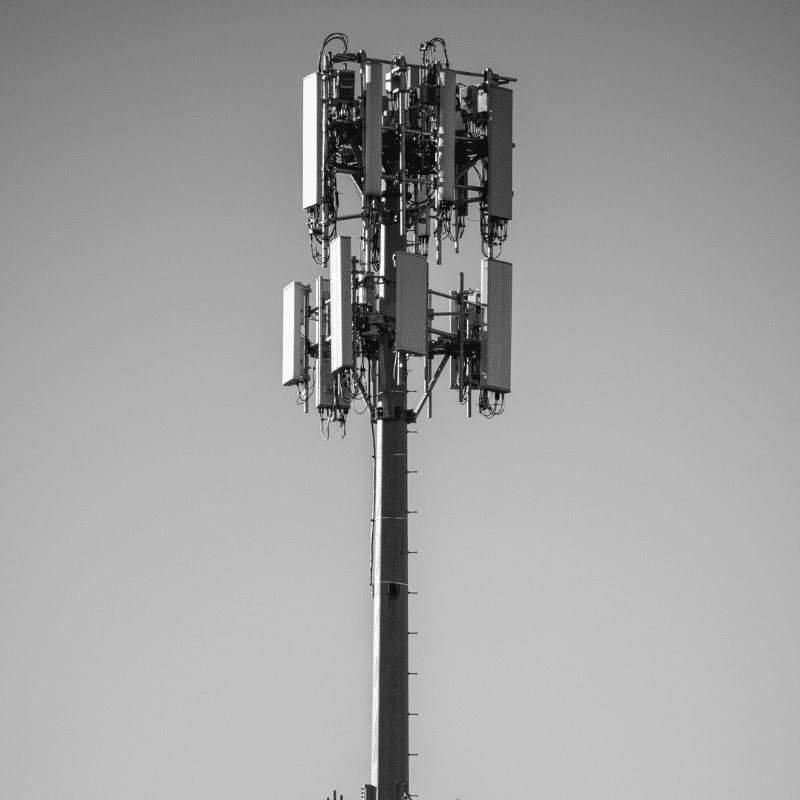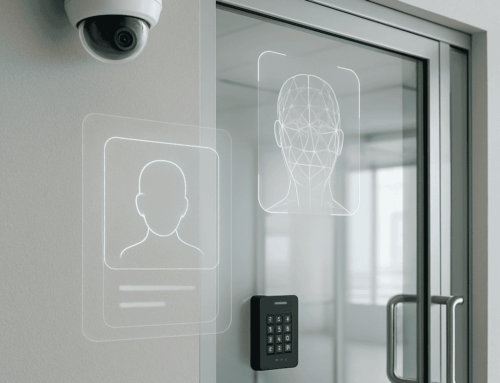Defeating The Cell Phone Dead Zone With A Distributed Antenna System

What is a distributed antenna system (DAS)?
The best way to understand what a DAS is and why it’s important is to imagine this scenario: Your spouse or partner asks you to run to the store to pick up a specific salad dressing for dinner. You walk to the back of the store, where it’s kept, only to discover that the grocery store is out of stock. Now you need a substitute, so you pull out your phone and notice that you have no cell reception! Either you walk to the front of the store to make the call, or you guess and hope your choice works out.
This scenario could have been prevented if the grocery store had installed a DAS to boost the cellular signal through the store.
More or less wireless
Wireless phone coverage is just short of a miracle, especially when you consider all the amazing things a smartphone can do with just a little sip of connectivity. However, cellular signals face two primary limitations: signal-blocking building materials and bandwidth caps.
In the grocery store example, you’re most likely suffering from the interference of steel, concrete, and brick in the building’s structure. When you attend a football game or a concert, you encounter bandwidth limitations, i.e., there are too many people using up the available signal at the same time.
Similarly, you can experience both versions of this on your home wifi network. If you’re too far away from the router, you can’t even download your emails (weak signal). But if everyone in your house is streaming Netflix or playing online video games at the same time, you’ll see a drop in performance, regardless of how close you are to the router (bandwidth cap).
Passive vs. active DAS
The goal of a distributed antenna system, or in-building cellular network, is to improve the coverage and quality of reception throughout a building.
A passive DAS will accomplish this through a network of transmitters placed throughout the building. These transmitters rebroadcast the signal of the nearest cellular tower to provide everyone with a usable connection. The power and equipment needs for a passive DAS are typically lower than an active DAS, and therefore cheaper to install and maintain.
If a passive DAS works a bit like hooking up multiple water sprinklers to a single water hose (improving the coverage from an existing source), then an Active DAS is equivalent to hiring a contractor to install a new, larger water main.
Active DAS are useful when you need to supply additional bandwidth to service higher demand, such as sports arenas and conference centers. It’s possible that you might need an active DAS to service a less crowded structure, such as an office, school, or hospital, but only if the wireless phone carriers don’t have a tower installed nearby.
As you might imagine based on the water main example, the power and equipment needs for an active DAS are much greater than for a passive DAS. Not to mention the complexity of integrating with local wireless carriers, a process that has to be repeated for each carrier. So much so that it’s rarely a cost-effective solution for most businesses or building owners, unless you have a critical need for high-bandwidth cell coverage.
People see cell coverage as a utility, not a luxury
Which is to say, they take it for granted and feel deep frustration when their phone calls drop or if social media and video streaming are unavailable. That has major implications for how people experience your venue.
There is a variety of ways to increase signal coverage and quality in your building. You might decide to expand the WiFi coverage, upgrading routers, and paying for top-tier speeds from your internet provider. This comes with its own limitations and requirements, such as increased security risk and maintenance costs. Will you keep separate networks for staff and guests? What about password management?
You could install a cell signal booster, which is similar to a DAS, but without the coverage quality or performance. It might be the right solution for a localized dead zone, but will disappoint if you try to cover an entire floor or building with it.
How to decide if a DAS is right for your venue
If you’re planning coverage for new construction, then it’s best to bring in a consultant that can test and analyze the signal fidelity characteristics of the space and recommend a comprehensive solution. If you’re optimizing an existing space, then it’s a good idea to start by surveying employees and guests to learn how they use their devices and where the shortfalls occur.
As a general rule, any space under 100,000 square feet can be serviced by a passive DAS. Anything over 500,000 square feet almost certainly will require an active DAS.
Many hospitals already employ robust WiFi systems on their campuses, including private networks for staff, and guest networks for patients and visitors. These can easily be overwhelmed by sheer demand, especially as staff rely more and more on their smartphones for work communication. The case for a passive DAS in a hospital must be made on a case by case basis, where existing solutions have fallen short.
If you host live events (depending on building capacity), public WiFi is unlikely to satisfy anyone. The fluctuation in demand is too great — when the venue is empty, you need almost no bandwidth and when it’s full, you’d be hard-pressed to keep up no matter which technology you pick. Again, the sweet spot can be found in serving the most people at an acceptable cost.
For school and corporate campuses, the case for DAS depends greatly on the size of the space. A college might spread across several square miles and hundreds of buildings, including sports venues and large lecture halls — requiring a blend of solutions for each use-case. Corporations enjoy the simplicity of knowing how many people use the campus and controlling access where needed. If nearly everyone is using the same secured WiFi network, you can eliminate a lot of the need for data connectivity, but you’ll still need cell signal for phone calls. Alternately, if you host a lot of vendors or customers, then you may need a passive DAS to separate that traffic from your internal networks.
The costs of installing a DAS
Estimated costs for an active DAS fall between $2-4 per square foot, whereas a passive DAS can be installed for between $1 and 30¢ per square foot. Obviously, there are very different business cases for each solution. Fortunately, the infrastructure for a passive DAS is the same as it is for structured cable, which should limit the need for modifications. Active DAS has much higher power requirements and needs engineering solutions to fit within an existing building.
A note on 5G networks
You’ve probably heard a lot of news about the coming 5G networks and the benefits of this new technology. Dig a little deeper and you’ll learn that 5G is not a simple speed upgrade to existing networks. The technology behaves very differently from 4G/LTE — it will almost certainly require passive DAS installations due to the fact that 5G signal does not pass through structural materials (steel, woods, glass, concrete, etc.) very well at all. That said it will almost certainly pay dividends for you to get a DAS expert’s recommendation on future-proofing your building for 5G.
About i.e.Smart Systems
i.e.Smart Systems is a Houston, TX based technology integration partner that specializes in design and installation of audio/visual technology and structured cabling. For more than three decades, our team of in-house experts has partnered with business owners, architectural firms, general contractors, construction managers, real estate developers, and designers in the Houston market, to deliver reliable, scalable solutions that align with their unique goals.




